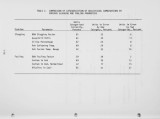| Title |
Evaluating Slagging and Fouling Parameters |
| Creator |
Barrett, R. E.; Murin, J. M.; Mack, G. A.; Dimmer, J. P. |
| Publisher |
University of Utah |
| Date |
1983 |
| Spatial Coverage |
Akron, Ohio |
| Abstract |
This paper gives preliminary results of a study that Battelle is conducting for Electric Power Research Institute (EPRI). Among the objectives of the study is the development of an improved understanding of the knowledge of slagging and fouling as affected by coal characteristics, boiler design, and operating conditions. As part of this study, Battelle designed a 24-page questionnaire to use in soliciting data from utilities. Questionnaires have been completed and returned for 130 unique boilers--119 representing U.S. utilities and 11 representing C.E.G.B. units in the United Kingdom. Units represented are all of 300 MW or larger size, and include dry bottom, wet bottom, and cyclone units. Coals fired by the U.S. units include Eastern and Midwestern bituminous and Western subbituminous. A few lignite-fired units are included. During the initial statistical analysis of the utility data, Battelle examined the relationship of commonly used slagging and fouling parameters as predictors of slagging and fouling problems. Parameters examined included coal parameters (ash fusion temperature, slagging factor, base/acid ratio) times sulfur, and heat release rate per unit plan area. The usefulness of some commonly used slagging and fouling parameters for predicting deposit problems is reported. |
| Type |
Text |
| Format |
application/pdf |
| Language |
eng |
| Rights |
This material may be protected by copyright. Permission required for use in any form. For further information please contact the American Flame Research Committee. |
| Conversion Specifications |
Original scanned with Canon EOS-1Ds Mark II, 16.7 megapixel digital camera and saved as 400 ppi uncompressed TIFF, 16 bit depth. |
| Scanning Technician |
Cliodhna Davis |
| ARK |
ark:/87278/s6959m37 |
| Setname |
uu_afrc |
| ID |
166 |
| Reference URL |
https://collections.lib.utah.edu/ark:/87278/s6959m37 |






























